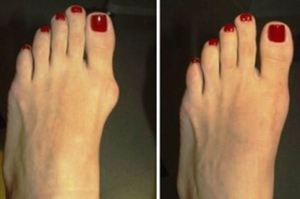Bunions Treatment
What Are Bunions?
A bunion is a common condition that involves an abnormal, bony bump at the base of the big toe, causing the joint to swell outward and become painful. The big toe may also turn inward toward the second toe because of the enlarged joint, which can then lead to difficulty walking, ingrown toenails, and corns and calluses. Bunions can form when there is an improper balance of forces exerted on the joints of the foot, causing instability in the joint of the big toe.
What Causes Bunions?
Bunions often occur as a result of ill-fitting shoes, abnormal walking habits, or an inherited foot type. They can also be caused by injury, birth defects, arthritis, or certain neuromuscular disorders. Although bunions are not usually a serious condition, having them can be painful and embarrassing. If left untreated, bunions may grow larger and more painful over time. So, it's important to seek medical attention and discuss ideal treatment options with your doctor.
What Are the Symptoms Of Bunions?
Early signs of bunions often involve pain and swelling around the joint at the base of the big toe. The skin may become red or warm and if the big toe pushes under the second toe, a painful corn may form on the top of or inside the second toe. In some cases, bunions cause no symptoms other than making the foot harder to fit in a shoe.
How Do You Treat Bunions?
Bunions treatment depends on the severity of the condition, although early treatment is considered most effective. Mild bunions may be relieved of pain simply by changing shoes, applying ice or taping your foot into a normal position. Medication, orthotics, and physical therapy may also be recommended by your doctor. Surgical treatment, usually reserved for more severe cases, can improve pain, inflammation, deformities and stiffness. So, if you need bunions treatment in Salisbury, MD, contact us right away.
 The most common surgical procedure for bunions is a bunionectomy, which includes:
The most common surgical procedure for bunions is a bunionectomy, which includes:
- Removing the swollen tissue from the big toe joint
- Removing part of the bone to straighten the big toe
- Permanently joining the bones of the big toe joint
Most bunion procedures are performed on an outpatient basis under local anesthesia. Depending on the complexity of the procedure or the patient’s preference, general anesthesia may also be used. Complications from these treatments are rare but may include infection, recurring bunion, or nerve damage.
Recovery from bunion surgery depends on the procedure’s complexity. Some people will be able to walk on their feet immediately after surgery, while others may need to use crutches or a cane for a few weeks or longer. It is important to keep your dressing clean and dry to ensure proper healing. Most patients may also require the use of orthotics after surgery in order to maintain stable and correctly positioned feet.
To learn more about bunions treatment and preventive foot care, please contact us at Thomas Podiatry & Associates at 410-749-0121 today or click here to schedule an appointment. Our team will be happy to assist you!





